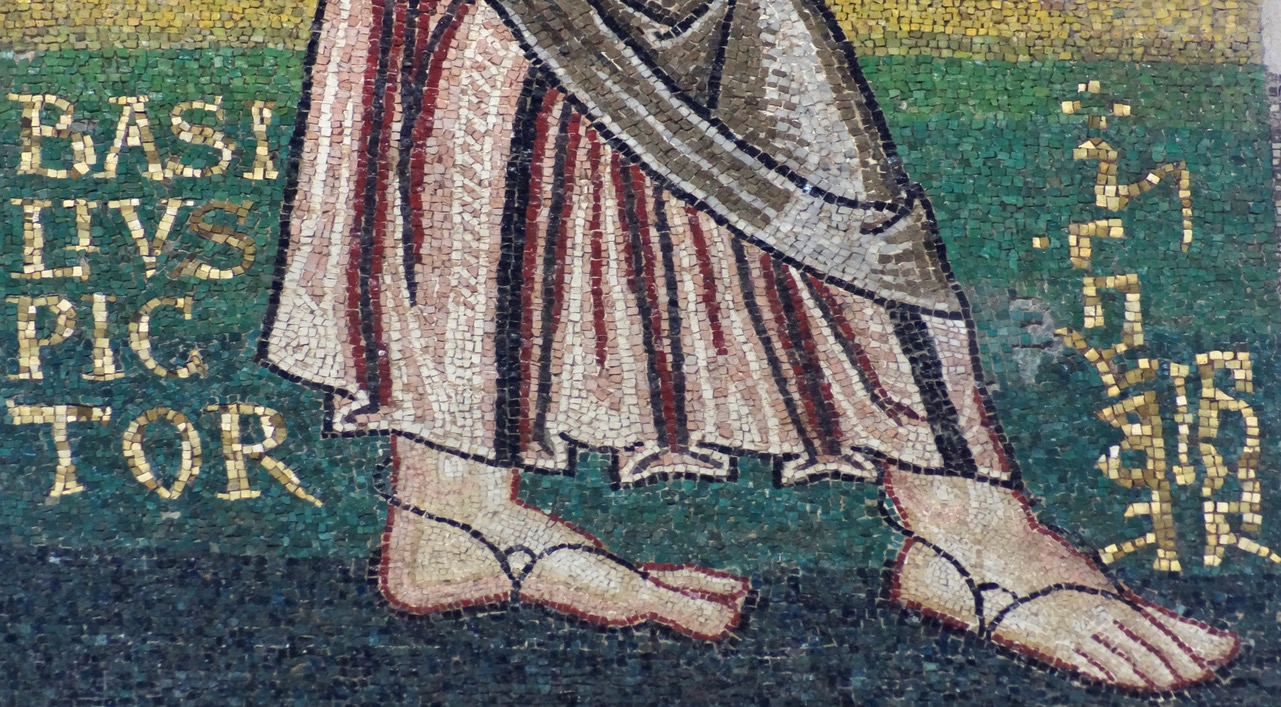Research Programmes 2024
Titulus. Typography and medieval epigraphy
Since 2016, the epigraphy team at the CNSCM in Poitiers has been developing TITULUS, the digital component of the Corpus des inscriptions de la France médiévale. One of its aims is to offer a “dynamic” edition, with a plural vision of the text thanks to various tabs that highlight graphic aspects such as: 1) glyphs; 2) letter sets; 3) abbreviations; 4) spaces, connected to a global reflection on punctuation.
To display unencoded characters, the MUFI (Medieval Unicode Font Initiative) database is used, via the Unicode private zone. This option is no longer entirely satisfactory, and it’s time to think about a dedicated typographic solution for representing inscribed characters, which can be integrated into XML-TEI, to provide a real bridge between the encoding of inscriptions and the display of glyph variants.
The corpus studied is that of the GRAPH-EAST project (ERC, February 2021-January 2027), which is processing a set of 3,000 inscriptions and graffiti in Latin alphabet, spanning ten centuries (from the 7th c. to the 16th c.) and spread across ten countries of the eastern Mediterranean, thanks to a multidisciplinary team of around ten researchers, engineers and students. Its aim is to assemble as exhaustive a corpus as possible, while considering the epigraphic document in its four dimensions (textual, material, contextual and functional), and to meet four main scientific objectives: 1) To explore the cycle of the epigraphic object, from its production to its reception today; 2) To understand the representation and practice of writing in the Latin alphabet in the East; 3) To place the Latin script in a broad graphic landscape, taking into account surrounding scripts - Arabic, Greek, Hebrew, Armenian, Georgian, etc. - to propose a connected history of epigraphs. 4) Analyze this migrant script through the prism of cultural transfers between East and West.
The Missing Scripts 2024
Unicode has become an essential character-encoding standard for exchanging texts electronically. Unicode 15 encompasses 161 different writing systems, and more than 149 000 characters: its ambition is to include all the scripts of humanity.
The decodeunicode.org website, started in 2005 by Johannes Bergerhausen, and its associated book decodeunicode Schriftzeichen die der Welt (ed. Hermann Schmidt) gives a fascinating insight into the richness and diversity of the scripts covered by Unicode. And yet, more than a hundred writing systems are still missing from Unicode: minority and/or indigenous scripts, sometimes ancient or undeciphered (but not necessarily complex in their design), which are still awaiting to be approved by the Unicode Consortium.
The aim of the Script Encoding Initiative (SEI) at the University of Berkeley is to provide the linguistic expertise required to submit new proposals for these writing systems to Unicode. Many of these scripts have never existed in a typographic form, and display some very interesting shapes: they represent a kind of unexplored territory for type designers. The Missing Scripts project aims to support the SEI’s proposals to Unicode, through the design of typefaces for the missing entries. To achieve this, a multi-year research program is implemented, based on a classification by Johannes Bergerhausen, who established different levels of complexity for these scripts, based on the SEI database. The work will be conducted over a number of years, combining several levels of expertise: linguistics (SEI, Berkeley), type design (ANRT) and graphic design / mediation (decodeunicode, Hochschule Mainz).
The website The World’s Writing Sytems and the poster show the actual state of research.
The Missing Scripts programme will focus, from October 2024 to March 2026, on the following scripts: MASABA, MINIM DAG NOORE, N’TI , LOMA, LUO LAKESIDE, ODÙDUWÀ, SONGHAI (edit. 2024/06/17: GBÉKOUN, MWANGWEGO and ZAGHAWA removed, N’TI, LOMA et LUO LAKESIDE added). In collaboration with Johannes Bergerhausen, we will also investigate the graphic representation of a “family tree” of the world’s writing systems.
Desired profile for the application:
Interest in Latin and non-Latin type design (specify which writing system)
English spoken
Good organisational skills
Visiting professors & experts:
Pr Johannes Bergerhausen, Hochschule Mainz (DE) / decodeunicode.org
Dr Deborah Anderson, Dr Anushah Hossain Université de Berkeley (USA) / Script Encoding Initiative
Dr Thomas Mullaney, Université de Stanford (USA) / Silicon
